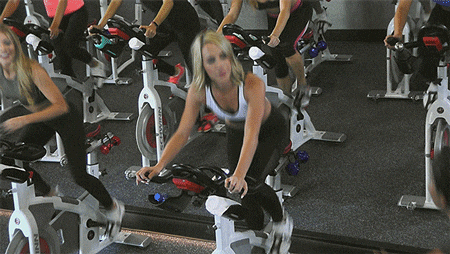The Secrets of Zone 2 Training: Performance, Longevity, and More

Disclosure:
Written by: Jon Mitchell, PA-C
You know those people who seem to never get tired no matter how much activity they do?

Have you ever wondered how to get this type of stamina — without having to workout HARD 5-6 days a week?
Well, one of the most effective ways to improve your stamina & endurance, performance, and even longevity... is to train your Zone 2 a few times a week.
What is Zone 2 Training?
The term "training zones" refers to different activity levels that target different types of:
Energy sources: Fat & Carbohydrates
Muscle fiber types: Type I & Type II.
Zone 2 training is where your activity preferentially uses fat and some carbohydrates for energy... and you are working your Type I (slow twitch) muscle fibers.
Our energy source use during workouts. (CHO = Carbohydrate oxidation) Source: University of Colorado
So why would you want to train Zone 2 over the other zones?
The Benefits of Zone 2 Training
This type of training has a couple of advantages:
You are improving your glycolytic efficiency: This is a fancy way of saying your body is using glucose for energy as efficiently as possible. More energy = less fatigue.
Your mitochondrial function, health, and density ALL improve the most: This is because fat is burned solely in the mitochondria. These are the powerhouses of the cell, so better mitochondrial function means more energy. And since their health has also been tied with longevity, it could help increase lifespan.

The brain sees an increase in neurotrophic factors, such a BDNF (brain derived neurotrophic factor): Neurotrophic factors help with cognitive function, such as learning and memory.
How to Train Zone 2
Training Zone 2 requires you to do a low-level exercise for a minimum amount of time, which is about 45 minutes.
This is because it takes roughly 20-30 minutes for your mitochondria to start using fat for fuel... so you need to train for a little longer than that to start noticing the benefits.
The amount of exertion required to get into Zone 2 — without going into Zone 3 (no man's land) — varies per person...
But it can be measured a few ways, including:
Measuring blood lactate levels
Power output
Heart rate
Or perceived exertion
Each method has their positives and negatives... but here we will focus on heart rate and perceived exertion because they are the easiest to measure and monitor.
In order to determine your Zone 2 heart rate you will want to use the MAF heart rate formula:
The MAF 180 Formula
MAF training is a good way to use your heart rate to keep yourself in Zone 2.
Here's how it works...
First, subtract your age from 180, then modify from one of the categories below:
(a) If you are:
With — or recovering from — a major illness (heart disease, any operation, hospital stay, etc.)
In rehabilitation...
On any regular medication...
Or in Stage 3 (chronic) overtraining or burnout...
Subtract 10.
(b) If you are:
Injured
Overfat
Stagnant or regressed in training or competition (such as poor MAF Tests) or competition
Seeing more than two colds, the flu, or other infections per year
Suffering from seasonal allergies or asthma
In Stage 1 or 2 of overtraining
Or just starting, inconsistent, or just getting back into training...
Subtract an additional 5.
If you have been training consistently (at least 4 times weekly) for up to two years without any of the problems mentioned in (a) or (b)... then no modification is necessary...
Simply use 180 minus your age as your MAF HR.
(c) If you have been training for more than 2 years without any of the problems listed above, have made progress in your MAF Tests, improved competitively, and are without injury...
Add 5.
All told, your training should be within 5 beats of your MAF score.
So for example: If your MAF score is 140, then your heart rate should be between 135-145 while exercising, and never deviate.
Deviating from the calculated heart rate can quickly take you out of Zone 2.
What about Perceived Exertion?
While this isn’t the most accurate way to measure things, it can help when combined with heart rate monitoring.
The key is to exercise where your breathing is increased, but not so much so that you cannot still hold a casual conversation.
What are the best Zone 2 exercises?
What's best for one person might not be for another, so it's always good to talk to your doctor...
But two great — and easy — ways to target Zone 2 are are cycling and walking on a treadmill at a slight incline.

You can also jog or use a rowing machine...
But keep in mind it's often more difficult to strictly stay within your desired heart rate range with these workouts.
How Often Should You Be Training Zone 2?
Again, this could vary from person to person.
Things like age, your MAF result, whether or not you're intermittent fasting and exercising, and other factors can all play a part in building a personal routine...
But a good optimal amount is 3-4 times a week for 45 minute sessions.
Conclusion
Zone 2 training could be a good way to improve your endurance, athletic performance, longevity, and overall health...
And since the ideal workouts often do not require advanced techniques, it could be easily accessible to start and/or stay consistent with.
Have you had any experience with Zone 2 training? Let us know below:
---
At UltimateHuman.Org, we talk about what you need to look, feel, and be your best self.
For more on the latest in biohacking, anti-aging, longevity, and health... Join the community by clicking below:
Disclosure:

